Best Thirties Adventure
By:
October 6, 2013
NOTE: This post has been superseded by HILOBROW’s 100 Best Adventures of the Thirties page.
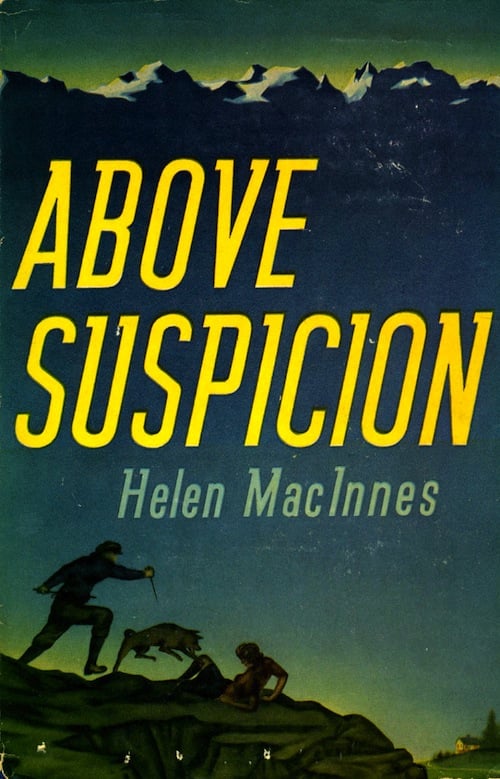
The Best Adventure series of posts will list my favorite 21 adventure novels from each of the 20th Century’s first eight (socio-cultural) decades. Plus, I kicked off the series with a list of the Top 32 adventures from the 19th Century; in total, then, I aim to list 200 of my all-time favorite adventures.
JOSH GLENN’S *BEST ADVENTURES* LISTS: BEST 250 ADVENTURES OF THE 20TH CENTURY | 100 BEST OUGHTS ADVENTURES | 100 BEST RADIUM AGE (PROTO-)SCI-FI ADVENTURES | 100 BEST TEENS ADVENTURES | 100 BEST TWENTIES ADVENTURES | 100 BEST THIRTIES ADVENTURES | 75 BEST GOLDEN AGE SCI-FI ADVENTURES | 100 BEST FORTIES ADVENTURES | 100 BEST FIFTIES ADVENTURES | 100 BEST SIXTIES ADVENTURES | 75 BEST NEW WAVE SCI FI ADVENTURES | 100 BEST SEVENTIES ADVENTURES | 100 BEST EIGHTIES ADVENTURES | 75 BEST DIAMOND AGE SCI-FI ADVENTURES | 100 BEST NINETIES ADVENTURES (in progress) | 1994 | 1995 | 1996 | 1997 | 1998 | 1999 | 2000 | 2001 | 2002 | 2003 | NOTES ON 21st-CENTURY ADVENTURES.
20 ADVENTURE THEMES AND MEMES: Index to All Adventure Lists | Introduction to Adventure Themes & Memes Series | Index to Entire Series | The Robinsonade (theme: DIY) | The Robinsonade (theme: Un-Alienated Work) | The Robinsonade (theme: Cozy Catastrophe) | The Argonautica (theme: All for One, One for All) | The Argonautica (theme: Crackerjacks) | The Argonautica (theme: Argonaut Folly) | The Argonautica (theme: Beautiful Losers) | The Treasure Hunt | The Frontier Epic | The Picaresque | The Avenger Drama (theme: Secret Identity) | The Avenger Drama (theme: Self-Liberation) | The Avenger Drama (theme: Reluctant Bad-Ass) | The Atavistic Epic | The Hide-And-Go-Seek Game (theme: Artful Dodger) | The Hide-And-Go-Seek Game (theme: Conspiracy Theory) | The Hide-And-Go-Seek Game (theme: Apophenia) | The Survival Epic | The Ruritanian Fantasy | The Escapade
This is the fifth post in the series. Here you’ll find a list of my Top 21 Adventures from the Thirties (1934–1943).
ALSO SEE: Golden Age Sci-Fi: 75 Best Novels of 1934–1963

During the Thirties, a new era began for both science fiction/fantasy and comic books: the so-called Golden Age, which for both genres would last until the early 1960s. With DC’s Action Comics #1, the comic book made its debut as a mainstream art form. During this era, Jerry Siegel and Joe Shuster, Bob Kane, Bill Finger, Julius Schwartz, Will Eisner, Bill Everett, Carl Burgos, Sheldon Mayer, Joe Simon, and others invented and refined comic-book superheroes — e.g., Superman and Batman, Captain America, The Spirit, Namor the Sub-Mariner, Daredevil, The Human Torch, Flash, Green Lantern, Hawkman — as we still know them. Meanwhile, guided in important ways by Astounding Science Fiction editor John W. Campbell Jr., pulp speculative fiction’s romantic, uncanny 1904–33 Radium Age era was — for better or worse — eclipsed by the wised-up, gung-ho “mature” science fiction and fantasy of, among others, Robert A. Heinlein, Fritz Leiber, L. Sprague de Camp, Fredric Brown, Clifford D. Simak, L. Ron Hubbard, C.L. Moore, A.E. van Vogt, Eric Frank Russell, Jack Williamson, Robert E. Howard, John Wyndham, and Edmond Hamilton.
THIRTIES FANTASY: See HILOBROW’s CROM YOUR ENTHUSIASM series.
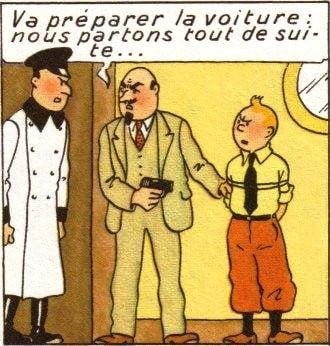
In the Adventure genre generally speaking, a similar struggle took place during the Thirties. As we saw when I discussed my favorite adventure from the Twenties, World War I drove a wedge into literature. On one side of that divide were romantic, uncanny adventure (John Buchan’s oeuvre being the prime example); on the other side, wised-up, hardboiled adventure (Ernest Hemingway, Dashiell Hammett). During the Twenties, these two modes of adventure writing co-existed; by the end of the Thirties, these two modes would merge in an aufheben (destroying-and-preserving) manner. By 1943 John Buchan-type adventure (like Buchan himself, who died in 1940) was dead; but Buchan-esque themes and memes had found new purchase, in the wised-up adventure writing of Michael Innes, for example, not to mention Eric Ambler and Graham Greene.
PS: Note that Hitchcock’s period of great adventure films begins in 1934 — with The Man Who Knew Too Much. Also released during this era: Hitchcock’s The 39 Steps (a sardonic adaptation of Buchan’s novel), Secret Agent (loosely based on Somerset Maugham’s Ashenden), Sabotage (adapted from Conrad’s The Secret Agent), Young and Innocent (based on a Josephine Tey adventure), The Lady Vanishes (based on adventure by Ethel Lina White), Jamaica Inn (based on a Daphne du Maurier adventure), Rebecca (based on a Daphne du Maurier’s romantic thriller), Foreign Correspondent (James Hilton wrote the dialogue), Suspicion (based on Francis Iles’s crime adventure Before the Fact), Saboteur (Dorothy Parker was one of the screenwriters), and Shadow of a Doubt.
PPS: Another terrific source of adventure story-telling during this period was Orson Welles’s radio programs Mercury Theatre on the Air (1938: including “Dracula,” “Treasure Island,” “A Tale of Two Cities,” “The Thirty-Nine Steps,” “The Count of Monte Cristo,” “The Man Who Was Thursday,” “Sherlock Holmes,” “Around the World in Eighty Days,” and of course, “The War of the Worlds.”) and The Campbell Playhouse (1938-40: including “Rebecca,” “Mutiny on the Bounty,” “The Glass Key,” “Beau Geste,” “Lost Horizon,” “Only Angels Have Wings,” “Huckleberry Finn”). Welles was also the voice of the title character of the radio adventure serial The Shadow, in 1937–38.
As in each post from this series, I’ve appended a list of 29 second-tier favorites — for a grand total of 50 Top Adventures of the Thirties. Plus a third-tier list that features, among other thing, many obscure adventures. These ought not to be thought of as “third-rate” (I wouldn’t mention them if they weren’t worth reading) but instead as Most Deserving of Rediscovery. Please leave suggestions and feedback.
If you’re interested in reading re-discovered science fiction adventures, check out the 10 titles from HiLoBooks — available online and in gorgeous paperback form.
In chronological order:
- 1934. James M. Cain’s hardboiled crime adventure The Postman Always Rings Twice, in which a drifter conspires with his lover to kill her husband, the owner of a roadside sandwich stand. The author’s first and most enduring book.
- 1934–46. Milton Caniff’s hardboiled adventure comic Terry and the Pirates. Terry and his tutor, Pat Ryan, arrive in China seeking a lost gold mine. Accompanied by their interpreter Connie, the two get into one scrape — complicated by a beautiful woman, including spoiled Normandie Drake, the thief Burma, and the bandit queen Dragon Lady — after another.
- 1935–36. Robert E. Howard’s atavistic fantasy adventure Conan the Conqueror (aka The Hour of the Dragon), serialized in the pulp magazine Weird Tales, is the author’s only full-length novel about the Cimmerian who evolves from a barbarian to a mercenary and thief to conquering king. Published in book form (Gnome Press) in 1950. See HILOBROW’s CROM YOUR ENTHUSIASM series.
- 1935. Olaf Stapledon’s science fiction adventure Odd John. Led by the titular teenage mutant “supernormal,” a group of evolved misfits form an island colony, where they experiment with telepathic communication and “individualistic communism.” Don’t kid yourself they belong to you / They’re the start of a coming race!
- 1936. John Buchan’s Richard Hannay novel The Island of Sheep, in which Hannay and his old comrade Sandy Arbuthnot — plus Hannay’s teenage son — must protect the heir to the secret of a great treasure from a sinister conspiracy. The action takes place in Scotland and the Faroe Islands. The modern Scottish tradition of adventure romances draws to a close….
- 1937–38. Hergé’s Tintin adventure The Black Island. Wait, here’s one more adventure romance set in Scotland! I’ve long suspected that The Black Island — in which Tintin escapes from an evil German doctor who runs a mental institution, then busts up a forgery racket in an abandoned castle on an island off the coast of Kiltoch (Scotland), is an homage to Buchan. Published as a color album in 1943.
- 1937. J.R.R. Tolkien’s high fantasy adventure The Hobbit, in which stay-at-home halfling Bilbo Baggins is persuaded by the wizard Gandalf to travel across Middle Earth and burgle the dragon Smaug’s treasure hoard. Along the way he and his dwarven companions encounter elves and trolls, goblins and wargs, talking spiders, and the twisted creature Gollum. See HILOBROW’s CROM YOUR ENTHUSIASM series.
- 1937. John P. Marquand’s Mr. Moto espionage adventure Think Fast, Mr. Moto, by the Pulitzer-winning author of The Late George Apley. Sent from Boston to close down a Hawaiian casino run by a distant relation, who turns out to be a beautiful woman, hapless Wilson Hitchings stumbles upon a Manchurian money-laundering scheme. Japanese super-spy Mr. Moto to the rescue!
- 1938. T.H. White’s fantasy adventure The Sword in the Stone. It may have been adapted into a Disney movie, but it’s not for kids. Merlin is weird and wise; Maid Marian is a leather-clad bad-ass; Colonel Cully (a hawk) is insane; King Pellinore is a bumbling fellow who can’t give up his search for the “Questin’ Beast.” From these and other marvelous characters, the Wart learns to be a great king. See HILOBROW’s CROM YOUR ENTHUSIASM series.
- 1938. Eric Ambler’s espionage adventure Epitaph for a Spy, the simple declarative style of which — “I arrived in St. Gatien from Nice on Tuesday, the 14th of August. I was arrested at 11:45 a.m. on Thursday, the 16th, by an agent de police and an inspector in plain clothes and taken to the Commissariat.” — signaled the genre’s break with cloak-and-dagger melodrama. A teacher on vacation is coerced into assisting with a counter-espionage operation.
- 1939. Raymond Chandler’s hardboiled crime adventure The Big Sleep, in which we first meet wisecracking PI Philip Marlowe. This complex, amusing, thrilling story — whose characters double-cross one another at every turn — is one of the best novels of the century. Plus, Howard Hawks’s 1946 adaptation is terrific.
- 1939. Eric Ambler’s espionage/crime adventure The Mask of Dimitrios; US title: A Coffin for Dimitrios. On vacation in pre-WWII Turkey, crime novelist Charles Latimer begins researching a master criminal and spy who has recently died. As he enters his subject’s criminal underworld, Latimer realizes that his own life may be in jeopardy.
- 1939. Geoffrey Household’s Rogue Male, the most exciting hunted-man adventure since Buchan’s Thirty Nine Steps, is one of my favorite novels. A big-game hunter stalks a European dictator (presumably Hitler), gets caught… then escapes back to England. Thanks to top-notch fieldcraft, he eludes his pursuers by going to ground like an animal.
- 1940. Michael Innes’s espionage adventure The Secret Vanguard, a sardonic inversion of John Buchan-style stories, complete with German spies, a chase through Oxford’s Bodleian Library, and a heroine on the run (in Scotland, of course). This might be a controversial pick, on my part, because many Innes fans dislike it. But it was a turning point in the author’s career, a transition from whodunnits to thrillers; and it was a key influence on Graham Greene.
- 1941. Fletcher Pratt and L. Sprague de Camp’s fantasy adventure Land of Unreason. An American diplomat is wounded during a WWII air raid in England; while recuperating in Yorkshire, he is transported to the land of Faerie. There, he is recruited by Titania and Oberon, who send him on a secret mission to the totalitarian Kobold Hills (i.e., Germany).
- 1941/45. Frans G. Bengtsson’s atavistic adventure The Long Ships (or Red Orm; original Swedish: Röde Orm), which is perhaps the definitive Viking novel. Set in the 10th century, the tale follows the adventures of Red Orm… and traces Scandinavia’s transformation from a pagan to a Christian civilization. Reissued by the New York Review of Books!
- 1941. Helen MacInnes’s espionage adventure Above Suspicion. A British spy working covertly in Germany is missing, so a young British couple are asked to turn their summer vacation into an undercover mission. Considered exemplary because of the author’s nuanced understanding of history, politics, culture, and geography, this is MacInnes’s first novel.
- 1941. Agatha Christie’s espionage adventure N or M?, which features a hunt for two of Hitler’s top secret spy agents in Britain. Fun fact: MI5 investigated Agatha Christie because a character called Major Bletchley appeared in her N or M?. MI5 was afraid that Christie had learned of Britain’s top-secret codebreaking center, Bletchley Park.
- 1942. Helen MacInnes’s WWII adventure Assignment in Brittany. In this story about a Francophone British soldier sent to spy as part of the resistance to the Nazi occupation of northern France — because he looks just like an injured Breton soldier — MacInnes strikes a dynamic balance between Buchan-style romance and Ambler’s hardboiled style. PS: The book was required reading for Allied intelligence agents sent to work with the French underground.
- 1943. Graham Greene’s espionage adventure The Ministry of Fear, which Fritz Lang adapted for the screen in 1944. At a charity fête held in wartime London, Arthur Rowe wins a cake that contains a secret message. As German bombs rain down on the city, Rowe is pursed by Nazi spies. NB: Greene credited Michael Innes’s The Secret Vanguard as his inspiration.
- 1943. Carl Barks’s 10-page Donald Duck comics are among the greatest achievements in the history of the medium. Barks didn’t invent the character, but he placed Donald in the city of Duckburg, which he populated with Uncle Scrooge McDuck, the sinister Beagle Boys, Gyro Gearloose, and many others. Plus, Barks sent Donald (and Donald’s nephews, armed with their Junior Woodchucks Guidebook) on great adventures — often treasure hunts.
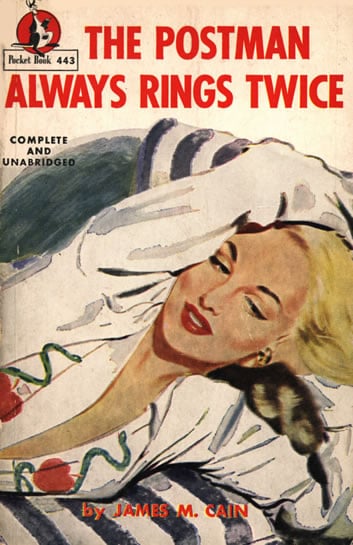
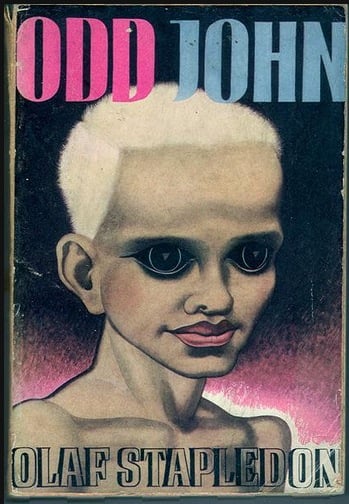
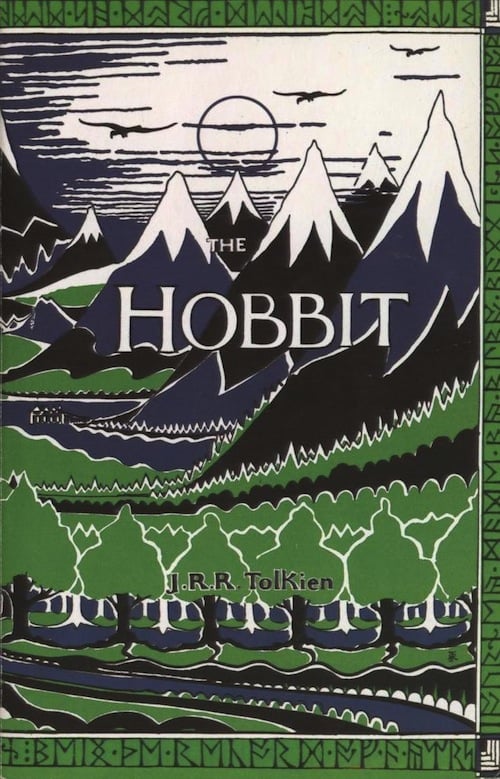
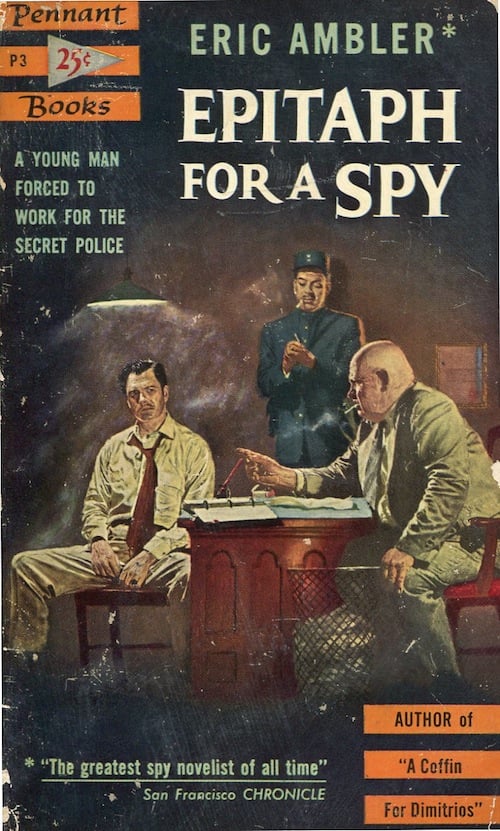
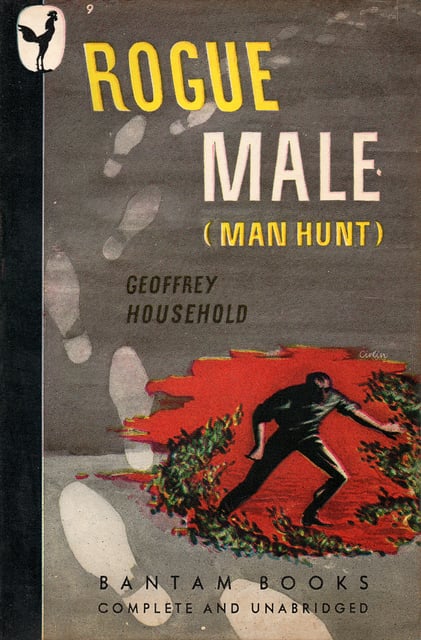
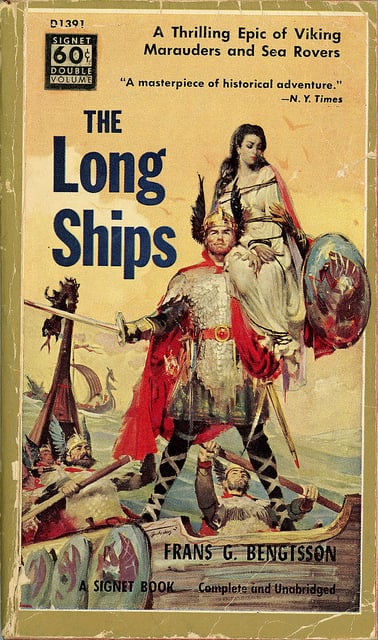
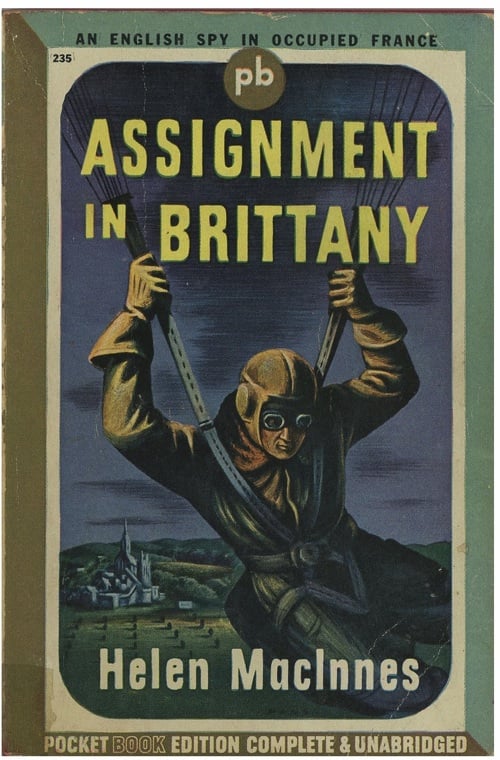
Thanks! To the nearly 400 adventure fans who kickstarted the SAVE THE ADVENTURE e-book club.
- 1934–39. C.L. Moore’s occult/fantasy adventure Jirel of Joiry. Five stories, about a female adventurer. See HILOBROW’s CROM YOUR ENTHUSIASM series.
- 1934–35. Hergé’s Tintin adventure The Blue Lotus. Published as a color album in 1946. Tintin’s friendship with Chang marked a new, less racist — even anti-racist — phase for Hergé.
- 1935. Christopher Isherwood’s espionage adventure Mr Norris Changes Trains.
- 1935. E.R. Eddison’s fantasy adventure Mistress of Mistresses, the first in the Zimiamvian trilogy. These works of high fantasy were highly praised by J.R.R. Tolkien, C.S. Lewis, and Ursula K. LeGuin. See HILOBROW’s CROM YOUR ENTHUSIASM series.
- 1936. Graham Greene’s hunted-man adventure A Gun for Sale.
- 1936. H.P. Lovecraft’s occult horror adventure The Shadow Over Innsmouth.
- 1936. John P. Marquand’s Mr. Moto espionage adventure Thank You, Mr. Moto.
- 1936. Eric Ambler’s Ruritanian-style espionage adventure The Dark Frontier. Uses and also parodies elements of this genre. One of the first novels to predict the invention of a nuclear bomb and its consequences. The first of many good ones from this author.
- 1936. Peter Cheyney’s Lemmy Caution adventure This Man is Dangerous. Note that the first 9 of the 10 Lemmy Caution novels — which were far more popular in France than England — appear during the 1934–1943 era.
- 1936. H.P. Lovecraft’s Radium Age science fiction adventure At the Mountains of Madness. A team of explorers from Miskatonic U. arrive in Antarctica… where they discover the frozen bodies of ancient monsters. They accidentally thaw one out. Plus, an abandoned city whose technologies reveal the true origins of intelligent life on Earth. Spoiler: It was ancient astronauts.
- 1936. Walter D. Edmonds’s historical adventure Drums Along the Mohawk. Adapted into the excellent 1939 John Ford movie. Note that a selection from this novel — “Escape from the Mine” — was collected in the definitive 1945 collection The Pocket Book of Adventure Stories, ed. Philip Van Doren Stern.
- 1937. Eric Ambler’s espionage adventure Uncommon Danger; US title: Background to Danger.
- 1937. C.S. Forester’s Horatio Hornblower historical sea-going adventure Beat to Quarters. The book, a collection of stories, is sixth by internal chronology, but the first published by Forester. The best Hornblower book to read first. Serialized after publication, in 1938.
- 1937. Arthur Ransome’s YA adventure We Didn’t Mean to Go to Sea.
- 1938. Geoffrey Household’s The Third Hour.
- 1938–39. Hergé’s Ruritanian-type Tintin adventure King Ottokar’s Sceptre, in which our hero uncovers a plot aimed at dethroning the rightful monarch of Syldavia. This yarn appeared at the apex of the Adventures of Tintin series: Tintin’s apartment is bombed; he steals an Me-109 from Borduria; Snowy saves the day! Published as a color album in 1947.
- 1939–40/1967. Flann O’Brien’s metafictional adventure The Third Policeman. After it failed to find a publisher, the author withdrew the manuscript from circulation and claimed he had lost it. The book remained unpublished until after his 1966 death.
- 1940. Richard Wright’s Native Son. Bigger Thomas’s murder of a white woman is depicted as an act of liberation in dehumanized, segregated Chicago.
- 1940. Walter Van Tilburg Clark’s The Ox-Bow Incident. A tense, moving morality drama about vigilantism on the western frontier. Attacks many of the Western genre’s assumptions.
- 1940. Raymond Chandler’s hardboiled crime adventure Farewell, My Lovely. Cynical PI Philip Marlowe returns, in a book considered by critics — and the author himself — as Chandler’s best.
- 1940. Jack Williamson’s occult fantasy adventure Darker Than You Think, a werewolves vs. humans battle. See HILOBROW’s CROM YOUR ENTHUSIASM series.
- 1940. L. Sprague de Camp and Fletcher Pratt’s atavastic fantasy adventure The Roaring Trumpet and The Mathematics of Magic. Reissued, with 1941’s The Castle of Iron, in 1975 as The Compleat Enchanter. See HILOBROW’s CROM YOUR ENTHUSIASM series.
- 1940. Ernest Hemingway’s Spanish Civil War adventure For Whom the Bell Tolls. Robert Jordan attempts to blow up a bridge vital to the upcoming Republican offensive.
- 1940. Nevil Shute’s atavistic adventure An Old Captivity. While piloting an air survey mission of Greenland, a young Scottish pilot enters a coma in which he dreams that he was once a Scottish slave aboard Leif Ericson’s vessel on its voyage of discovery.
- 1941. Margery Allingham’s WWII espionage adventure Traitor’s Purse.
- 1941. Howard Fast’s Western/historical adventure The Last Frontier. A group of Cheyenne Indians who, trying to escape to their homeland after betrayal on a reservation, are relentlessly pursued by the Army.
- 1941–42. Hergé’s Tintin adventure The Shooting Star. Published as a color album in 1942.
- 1943. James M. Cain’s crime adventure Double Indemnity. An insurance agent is seduced by a woman into killing her husband. Adapted as the classic 1944 Billy Wilder film.
- 1943. Fritz Leiber’s fantasy adventure Conjure Wife, in which a professor who studies primitive rituals and superstitions is targeted by the jealous wife of a colleague — she’s a witch. Luckily for him, so is his wife! In the end, the professor must apply scientific methodology to witchcraft. Adapted as the excellent 1961 horror movie Burn, Witch, Burn. See HILOBROW’s CROM YOUR ENTHUSIASM series.
- 1934. Max Ernst’s collage adventure Une semaine de bonté.
- 1934. Dashiell Hammett’s crime adventure The Thin Man.
- 1934. Dorothy L. Sayers’s crime adventure The Nine Tailors.
- 1934. Dennis Wheatley’s occult adventure The Devil Rides Out.
- 1934. Rex Stout’s mystery adventure Fer-de-Lance, the first Nero Wolfe novel. Wolfe is a corpulent brainiac who rarely leaves his apartment; his partner must do all the fieldwork.
- 1934. E.E. “Doc” Smith’s Lensman sf adventure Triplanetary. Published in book form in 1948.
- 1934. MacKinlay Kantor’s Civil War adventure Long Remember. Considered one of the best fictionalized accounts of the Battle of Gettysburg.
- 1934. Geoffrey Trease’s YA historical adventure Bows Against the Barons, a left-wing retelling of the Robin Hood story.
- 1934. Victor Maslin Yeates’s WWI adventure Winged Victory. A sardonic inversion. Widely regarded as a classic description of aerial combat and the futility of war.
- 1934. LeRoy W. Snell’s YA Klondike adventure The Lead Disk. One of my all-time favorites.
- 1934. Arthur Ransome’s YA adventure Coot Club.
- 1934. James Gould Cozzen’s science fiction (sort of) adventure Castaway. The sole survivor of a destroyed New York lives amid the bounty of a great department store.
- 1934. E.E. “Doc” Smith’s Skylark sf adventure Skylark of Valeron. Published in book form in 1949.
- 1934. Nathanael West’s A Cool Million: The Dismantling of Lemuel Pitkin. Sardonic inversion of the Horatio Alger-type rags-to-riches adventure genre.
- 1934. Evelyn Waugh’s A Handful of Dust, a sardonic inversion of the frontier/exploration adventure. According to Waugh: “The idea came quite naturally from the experience of visiting a lonely settler of that kind and reflecting how easily he could hold me prisoner […] eventually the thing grew into a study of other sorts of savages at home and the civilized man’s helpless plight among them.”
- 1934. Leslie Charteris’s Simon Templar adventure story collection The Misfortunes of Mr. Teal (also published as The Saint in England). One of the author’s best executed exploits. The Saint blackmails a prominent, crooked politician.
- 1934. Leslie Charteris’s Simon Templar adventure story collection Boodle.
- 1934. Leslie Charteris’s Simon Templar adventure story collection The Saint Goes On.
- 1935. Enid Bagnold’s YA horse-racing adventure National Velvet.
- 1935. Dorothy L. Sayers’s murder crime adventure Gaudy Night. A Harriet Vane joint. It’s been called one of the 30 essential crime reads written by women in the last 100 years.
- 1935. John Dickson Carr’s crime adventure The Hollow Man.
- 1935. Conrad Aiken’s crime adventure King Coffin. A psychological thriller about an intellectual obsessed with the perfect crime.
- 1935.Joseph O’Neill’s science fiction adventure Land Under England.
- 1935. John P. Marquand’s Mr. Moto espionage adventure Your Turn, Mr. Moto.
- 1935. C.S. Forester’s espionage (?) adventure and romance The African Queen.
- 1935. Charles G. Finney’s surreal adventure The Circus of Dr. Lao. A circus — managed by an elderly Chinaman — appears out of nowhere in a small American town. Things get crazy. Not really an adventure, but an amazing yarn.
- 1935. Leslie Charteris’s Simon Templar adventure The Saint in New York.
- 1935. Sinclair Lewis’s science fiction adventure It Can’t Happen Here. An American dictator rises to power.
- 1935. G.K. Chesterton’s crime adventure story collection The Scandal of Father Brown, the fifth of five Father Brown collections.
- 1935. Horace McCoy’s They Shoot Horses, Don’t They? is adventure-esque insofar as it concerns a grueling ordeal.
- 1935. John Steinbeck’s Tortilla Flat is a sardonic inversion of the adventure genre. Portrayed in ironic comparison to mythic knights on a quest, Steinbeck’s characters are dissolute idlers who reject nearly all the standard mores of American society.
- 1935–37. Hergé’s Tintin adventure The Broken Ear. Published as a color album in 1943.
- 1936. Jonathan Latimer’s comical crime adventure The Lady in the Morgue. Sardonic inversion of the genre.
- 1936. Margaret Mitchell’s historical adventure Gone with the Wind.
- 1936. Ethel Lina White’s espionage adventure The Wheel Spins. It was adapted into the 1938 Hitchcock thriller The Lady Vanishes.
- 1936. John Buchan’s espionage adventure Man from the Norlands.
- 1936. Leslie Charteris’s Simon Templar adventure Saint Overboard.
- 1936. Daphne du Maurier’s crime/treasure-hunt adventure Jamaica Inn. The plot follows a group of murderous wreckers who run ships aground, kill the sailors and steal the loot.
- 1936. Arthur Ransome’s YA adventure Pigeon Post.
- 1936. Andrew Lytle’s Civil War adventure The Long Night. Concerns a southern family’s campaign of vengeance against an outlaw gang.
- 1936. Josephine Tey’s Inspector Grant crime adventure A Shilling for Candles. Basis for Hitchcock’s excellent 1937 film Young and Innocent.
- 1936. Karel Čapek’s science fiction adventure War with the Newts.
- 1937. Leslie Charteris’s Simon Templar adventure story collection The Ace of Knaves.
- 1937. Murray Constantine (Katharine Burdekin)’s dystopian science fiction adventure Swastika Night.
- 1937. William Sloane’s horror/occult adventure To Walk the Night. See HILOBROW’s CROM YOUR ENTHUSIASM series.
- 1937. Leslie Charteris’s Simon Templar adventure Thieves’ Picnic.
- 1937. Dr. Seuss’s children’s book And to Think That I Saw It on Mulberry Street deserves a mention here. His first, and one of his best.
- 1937. Michael Innes’s crime adventure Hamlet, Revenge!.
- 1937. Peter Cheyney’s Lemmy Caution adventure Dames Don’t Care.
- 1937. Zora Neale Hurston’s Their Eyes Were Watching God features some adventure elements.
- 1937. Ernest Hemingway’s adventure To Have and Have Not. Key West “conch” Harry Morgan is forced by economic necessity into illegal activities.
- 1937. Cameron McCabe’s (Ernest Borneman’s) apophenic crime adventure The Face on the Cutting-Room Floor.
- 1937. Peter Cheyney’s Lemmy Caution adventure Poison Ivy.
- 1937. Kenneth Robert’s historical adventure Northwest Passage. Major Robert Rogers and his rangers have adventures during the French and Indian War.
- 1937. Caryl Brahms and S.J. Simon’s crime adventure A Bullet in the Ballet. PS: How did it take until 1937 for someone to use this title?
- 1937–38. E.E. “Doc” Smith’s Lensman sf adventure Galactic Patrol. Published in book form in 1950.
- 1938. Daphne du Maurier’s excellent psychological thriller Rebecca rates a mention here. It’s been called one of the 30 essential crime reads written by women in the last 100 years.
- 1938. Leslie Charteris’s Simon Templar adventure Prelude for War.
- 1938. B. Traven’s adventure The Bridge in the Jungle; an explorer gets involved in a village’s tragedy when a boy drowns. (Is this where Wes Anderson got the plot of The Darjeeling Limited?
- 1938. C.S. Lewis’s Space Trilogy science fiction adventure Out of the Silent Planet. Marred, in my opinion, by heavy-handed religious allegory.
- 1938. Vladimir Bartol’s historical adventure Alamut, about Hassan-i Sabbah and the 11th-c. Hashshashin.
- 1938. John P. Marquand’s Mr. Moto espionage adventure Mr. Moto is So Sorry.
- 1938. John Creasey’s Toff adventure Introducing the Toff. The first of sixty (!) adventures about a sophisticated thief who often preyed on other criminals — very much in the vein of Leslie Charteris’s Saint and Maurice Leblanc’s Arsene Lupin.
- 1938. Nicholas Blake’s crime adventure The Beast Must Die.
- 1938. C.S. Forester’s Horatio Hornblower historical sea-going adventure Ship of the Line, serialized. Published in book form in 1938.
- 1938. Eric Ambler’s espionage adventure Cause for Alarm.
- 1938. Eveleyn Waugh’s Scoop is a sardonic inversion of the adventure genre.
- 1938. John Steinbeck’s short story “Flight” — collected in the definitive 1945 collection The Pocket Book of Adventure Stories, ed. Philip Van Doren Stern.
- 1938. Peter Cheyney’s Lemmy Caution adventure Can Ladies Kill?.
- 1938. Graham Greene’s crime adventure Brighton Rock.
- 1938. Leslie Charteris’s Simon Templar adventure story collection Follow the Saint.
- 1938–39. C.S. Forester’s Horatio Hornblower historical sea-going adventure Flying Colours, serialized. Published in book form in 1939.
- 1939. Arthur Ransome’s YA adventure Secret Water.
- 1939. Leslie Charteris’s Simon Templar adventure story collection The Happy Highwayman. A sentimental favorite of mine — as an adolescent, I read it a dozen times.
- 1939. T.H. White’s YA historical/fantasy adventure The Queen of Air and Darkness.
- 1939. Frank S. Stuart’s historical fantasy adventure Caravan for China. A group of merchants and mercenaries in Ancient Rome take a perilous trip to China.
- 1939. John Steinbeck’s The Grapes of Wrath is not an adventure story, but it’s not unrelated to adventure.
- 1939. Graham Greene’s espionage adventure The Confidential Agent.
- 1939–40. E.E. “Doc” Smith’s Lensman sf adventure Gray Lensman. Published in book form in 1951.
- 1939. Peter Cheyney’s Lemmy Caution adventure Don’t Get Me Wrong.
- 1939. Christopher Isherwood’s Goodbye to Berlin.
- 1939. Arthur Koestler’s historical adventure The Gladiators. Predates Spartacus by twelve years.
- 1939. James Thurber’s story “The Secret Life of Walter Mitty” is a brilliant spoof of adventures.
- 1939. Agatha Christie’s And Then There Were None. A murder mystery without a detective. It’s been called one of the 30 essential crime reads written by women in the last 100 years.
- 1940. Arthur Ransome’s YA adventure The Big Six.
- 1940. Graham Greene’s The Power and the Glory.
- 1940. Peter Cheyney’s Lemmy Caution adventure You’d Be Surprised.
- 1940. Hammond Innes’s espionage adventure The Trojan Horse. Excellent chase scene through London’s ancient sewer system.
- 1940. T.H. White’s YA historical/fantasy adventure The Ill-Made Knight.
- 1940. Eric Ambler’s espionage adventure Journey into Fear.
- 1940. Leslie Charteris’s Simon Templar adventure The Saint in Miami.
- 1940. C.S. Forester’s historical adventure To the Indies. A man who defied the Spanish Inquisition endures a shipwreck and other misfortunes.
- 1940. MacKinlay Kantor’s short story “Gun Crazy” — collected in the definitive 1945 collection The Pocket Book of Adventure Stories, ed. Philip Van Doren Stern.
- 1940–41. Hergé’s Tintin adventure The Crab with the Golden Claws. Published as a color album in 1943.
- 1941. Arthur Ransome’s YA adventure Missee Lee.
- 1941. George R. Stewart’s extreme-weather adventure Storm became a best-seller… and helped lead to the naming of tropical cyclones worldwide.
- 1941. Cornell Woolrich’s crime adventure story “Rear Window.”
- 1941. Joe Simon and Jack Kirby’s Captain America Comics makes its debut.
- 1941. Virginia Lee Burton’s children’s Western adventure Calico the Wonder Horse. An early graphic novel.
- 1941. E.R. Eddison’s fantasy adventure A Fish Dinner in Memison, the second in the Zimiamvian trilogy.
- 1941. E.E. “Doc” Smith’s Lensman sf adventure Second Stage Lensmen. Published in book form in 1953.
- 1940. C.S. Forester’s historical sea-going adventure The Captain from Connecticut. Set during the War of 1812.
- 1941. Marcus Goodrich’s sea-going WWI adventure Delilah.
- 1941. Kenneth Patchen’s stream-of-consciousness antiwar drama The Journal of Albion Moonlight deserves a mention here.
- 1941. John Buchan’s adventure Sick Heart River. The book was published in the United States under the title Mountain Meadow. It makes a mystic cult of the Arctic Circle.
- 1941–42. E.E. “Doc” Smith’s Lensman sf adventure The Vortex Blaster. Published in book form in 1960.
- 1941. Anthony Gilbert’s (Lucy Beatrice Malleson’s) espionage adventure The Vanishing Corpse. Adapted as the 1943 film They Met in the Dark
- 1941. James Hilton’s Random Harvest has adventure elements.
- 1941. W. Somerset Maugham’s Up at the Villa incorporates elements of the crime and suspense novel.
- 1941. Peter Cheyney’s Lemmy Caution adventure Your Deal, My Lovely.
- 1941. Rex Warner’s dystopian anti-fascist adventure The Aerodrome.
- 1941. L. Sprague de Camp’s alternate-history adventure Lest Darkness Fall.
- 1941. John P. Marquand’s Mr. Moto espionage adventure Last Laugh, Mr. Moto. Published in book form in 1942.
- 1942. Leslie Charteris’s Simon Templar adventure story collection The Saint Goes West.
- 1942. Raymond Chandler’s crime adventure The High Window.
- 1942. Kenneth Fearing’s Clark Gifford’s Body, the story of a modern-day John Brown who attacks a radio station.
- 1942. John Steinbeck’s WWII adventure The Moon is Down. About the Socrates-inspired spirit of resistance in an occupied village in Northern Europe, presumably Norway.
- 1942. Nevil Shute’s WWII adventure Pied Piper, in which an elderly Englishman must smuggle a large group of young children out of German-occupied France.
- 1942. Peter Cheyney’s Lemmy Caution adventure Never a Dull Moment.
- 1942. Lloyd C. Douglas’s historical adventure The Robe. Based on the imagined life of the Roman soldier in charge of Christ’s crucifixion.
- 1942. Leslie Charteris’s Simon Templar adventure The Saint Steps In.
- 1942–43. Hergé’s Tintin adventure The Secret of the Unicorn. Published as a color album in 1943.
- 1943. Arthur Ransome’s YA adventure The Picts and the Martyrs.
- 1943. Peter Cheyney’s Lemmy Caution adventure You Can Always Duck.
- 1943. Hergé’s Tintin adventure Red Rackham’s Treasure. Published as a color album in 1944.
- 1943. C.S. Lewis’s Space Trilogy science fiction adventure Perelandra. Marred, in my opinion, by heavy-handed religious allegory.
- 1943. Vera Caspary’s psychological thriller Laura. It’s been called one of the 30 essential crime reads written by women in the last 100 years.
- 1943. C.S. Forester’s sea-going WWII adventure The Ship.
- 1943. Raymond Chandler’s crime adventure The Lady in the Lake.
- 1943. Jane Bowles’s Two Serious Ladies, an experimental study of two women who gradually lose their inhibitions in a series of bizarre experiences. Not exactly an adventure, but worth a mention here.
- 1943. Elizabeth Janet Gray’s YA historical adventure Adam of the Road.
- 1943. Esther Forbes’s YA historical adventure Johnny Tremain. A young apprentice in Revolutionary Boston finds himself at the center of the action.
- 1943–46. Hergé’s Tintin adventure The Seven Crystal Balls. Published as a color album in 1948. See HILOBROW’s CROM YOUR ENTHUSIASM series.
BEST ADVENTURE LIT: Best 19th Century Adventure (1805–1903) | Best Nineteen-Oughts Adventure (1904–1913) | Best Nineteen-Teens Adventure (1914–1923) | Best Twenties Adventure (1924–1933) | Best Thirties Adventure (1934–1943) | Best Forties Adventure (1944–1953) | Best Fifties Adventure (1954–1963) | Best Sixties Adventure (1964–1973) | Best Seventies Adventure (1974–1983). I’ve only recently started making notes towards a list of Best Adventures of the Eighties, Nineties, and Twenty-Oughts.
ADVENTURERS as HILO HEROES: Katia Krafft | Freya Stark | Louise Arner Boyd | Mary Kingsley | Bruce Chatwin | Hester Lucy Stanhope | Annie Smith Peck | Richard Francis Burton | Isabella Lucy Bird | Calamity Jane | Ernest Shackleton | Osa Helen Johnson | Redmond O’Hanlon | Gertrude Bell | George Mallory | Neta Snook | Jane Digby | Patty Wagstaff | Wilfred Thesiger | Joe Carstairs | Florence “Pancho” Barnes | Erskine Childers | Jacques-Yves Cousteau | Michael Collins | Thor Heyerdahl | Jean-Paul Clébert | Tristan Jones | Neil Armstrong
MORE FURSHLUGGINER THEORIES BY JOSH GLENN: TAKING THE MICKEY (series) | KLAATU YOU (series intro) | We Are Iron Man! | And We Lived Beneath the Waves | Is It A Chamber Pot? | I’d Like to Force the World to Sing | The Argonaut Folly | The Perfect Flâneur | The Twentieth Day of January | The Dark Side of Scrabble | The YHWH Virus | Boston (Stalker) Rock | The Sweetest Hangover | The Vibe of Dr. Strange | CONVOY YOUR ENTHUSIASM (series intro) | Tyger! Tyger! | Star Wars Semiotics | The Original Stooge | Fake Authenticity | Camp, Kitsch & Cheese | Stallone vs. Eros | The UNCLE Hypothesis | Icon Game | Meet the Semionauts | The Abductive Method | Semionauts at Work | Origin of the Pogo | The Black Iron Prison | Blue Krishma! | Big Mal Lives! | Schmoozitsu | You Down with VCP? | Calvin Peeing Meme | Daniel Clowes: Against Groovy | The Zine Revolution (series) | Best Adventure Novels (series) | Debating in a Vacuum (notes on the Kirk-Spock-McCoy triad) | Pluperfect PDA (series) | Double Exposure (series) | Fitting Shoes (series) | Cthulhuwatch (series) | Shocking Blocking (series) | Quatschwatch (series)
READ MORE essays by Joshua Glenn, originally published in: THE BAFFLER | BOSTON GLOBE IDEAS | BRAINIAC | CABINET | FEED | HERMENAUT | HILOBROW | HILOBROW: GENERATIONS | HILOBROW: RADIUM AGE SCIENCE FICTION | HILOBROW: SHOCKING BLOCKING | THE IDLER | IO9 | N+1 | NEW YORK TIMES BOOK REVIEW | SEMIONAUT | SLATE
